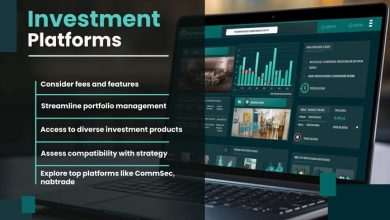For more than a decade, virtual-desktop infrastructure (VDI) looked like the perfect bridge between the button-down cubicle and the everywhere office: stream a Windows image from a data-centre, keep data off the endpoint, and call it a day. Yet 2025 finds even long-time believers unplugging their server farms. Rising licence fees, persistent lag and the sheer spread of browser-native apps have made the classic VDI stack feel like yesterday’s answer to yesterday’s problem. What follows is a look at five forces—economic, experiential, financial, security-driven and cultural—that are driving the shift toward lighter, cloud-first workspaces.
1. The economics no longer add up
VDI was supposed to stretch PC life cycles and centralise support, but the financial reality now reads like a bad lease: hypervisor fees, GPU upgrades for graphics-hungry teams, profile-management tools and specialist staff to keep it all running. Venn, whose platform markets itself as a virtual desktop alternative, calculates that many organisations spend thousands of dollars per user per year once the full stack—servers, licences, storage and labour—is tallied. Customers cite “high costs, complexity and latency” as the top reasons they abandon VDI for lighter workspaces. When a secure SaaS workspace can be delivered for a fraction of that, finance teams quickly conclude that the virtual-desktop era has passed its sell-by date.
2. Users hate lag—and they vote with risky work-arounds
Great end-user computing should be invisible; instead, many VDI sessions stutter whenever video meetings, design files and background sync all share the same pixel stream. That friction isn’t merely annoying—it is a security liability, because frustrated employees find work-arounds, such as downloading sensitive files locally or forwarding them to personal e-mail so they can open them natively. Modern cloud suites remove the temptation altogether. When Microsoft 365, Figma or Salesforce already run inside the browser, routing every click through a distant data-centre just to recreate a 1990s desktop metaphor feels perverse. Unsurprisingly, adoption studies show that the first browser-native pilot group almost never wants to return to a streamed Windows session. Latency is inertia’s worst enemy.
3. Cloud-first tools shift CapEx to OpEx—and slash admin time
A TechTarget comparison of Desktop-as-a-Service (DaaS) and SaaS notes that moving from self-hosted VDI to provider-hosted workspaces “shifts Capex to Opex and frees up IT labour hours otherwise spent building, maintaining and operating VDI.” Subscription pricing alone doesn’t guarantee savings, but it does make budgets elastic: add seats for a seasonal project, drop them the minute the contract ends. Perhaps more important, the vendor—not the in-house help desk—patches servers, scales compute and engineers redundancy. The staff hours reclaimed can be redirected to security posture, analytics or the next automation project instead of babysitting golden images. In an era where IT head-count is flat yet cyber-risk is rising, time saved is risk reduced.
4. Security has moved up the stack
Classic VDI defends the network perimeter; cloud-first environments protect the identity and the session. Zero-trust browser frameworks inspect every request in real time, enforce least-privilege access and apply data-loss-prevention policies before any payload reaches the user. Zscaler’s primer on zero-trust architecture explains that modern controls “eliminate implicit trust and require dynamic verification for every access request,” rendering old notions of a hardened enclave obsolete. When authentication, malware analysis and DLP all happen in the service layer, there is no need to ship every packet back to the corporate enclave; fewer VPN concentrators mean a smaller attack surface, and incident response accelerates because telemetry is already flowing into SaaS-based SIEMs rather than siloed VDI logs.
5. Remote-work reality favours the browser
Parallels’ 2025 cloud-strategy survey found that 84 percent of organisations now allow some form of remote work, with many citing VDI or DaaS adoption as a direct response to that policy. Employees bounce between cafés, client sites and home offices—networks IT cannot control. A browser-native stack that encrypts data in transit and at rest is easier to secure than a fat Windows image hauling megabytes of pixels over unpredictable Wi-Fi. On-boarding a contractor becomes a five-minute licence assignment instead of an overnight shipment of a locked-down thin client. Even regulated industries that once insisted on full virtual desktops are discovering that cloud security certifications, continuous compliance reporting and granular audit trails meet or exceed their old controls.
Making the leap: what to watch
Abandoning VDI isn’t as simple as buying a handful of SaaS licences. Start with a brutally honest inventory of desktop-only workloads—often legacy ERP clients, bespoke CAD systems or industrial control consoles. Some can be containerised; others may still require a niche DaaS pool. Pilot with power users to benchmark latency, offline requirements and peripheral support. Rewrite data-governance rules: when files live natively in SharePoint or Google Drive, retention schedules and e-discovery processes must travel with them. Finally, renegotiate endpoint policies; when company data never touches the device, a bring-your-own-device (BYOD) policy enforced through a secure browser enclave is suddenly realistic and far cheaper than managing a fleet of corporate laptops.
Conclusion
VDI solved a genuine problem in the early 2010s, but the technology landscape has mutated. Browser-native productivity suites, zero-trust identity, and consumption-priced cloud platforms have eroded its cost edge, user experience and security rationale. The organisations joining the stampede away from virtual desktops aren’t merely chasing novelty; they are pursuing lower total cost of ownership, happier employees and tighter risk controls. A decade ago the question was whether you were progressive enough to try VDI. In the second half of this decade the question is how fast you can migrate off it—and which cloud-first architecture will carry your workforce into its next chapter.




